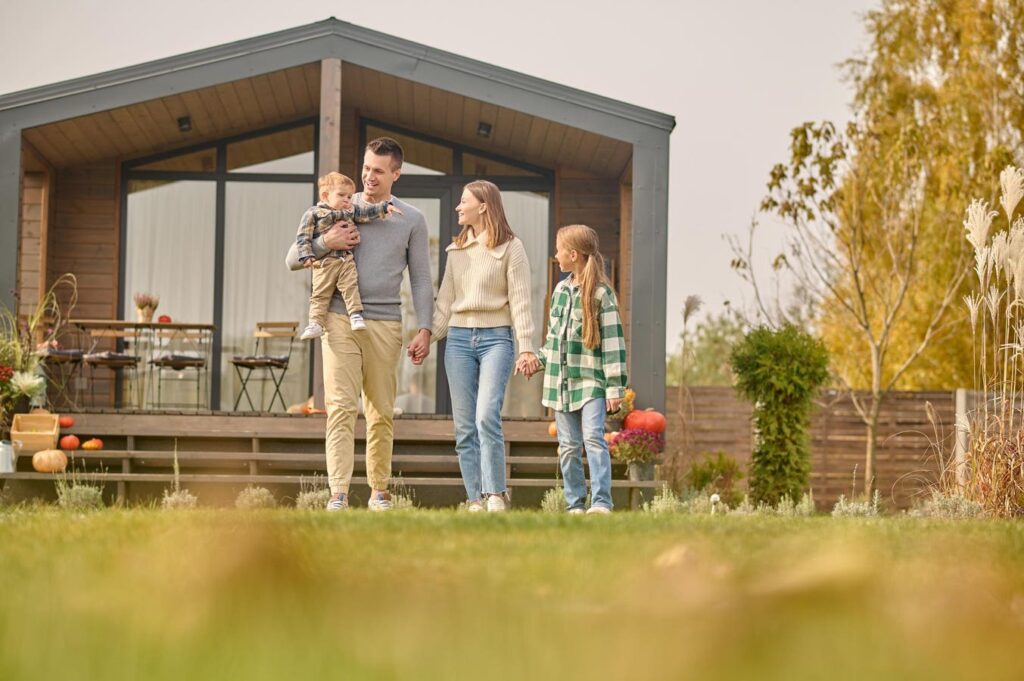The American Institute of Architects’ fourth quarter 2024 Home Design Trends Survey of its members reveals patterns in neighborhood design . Some of the findings from the online survey of 300 member firms reflect trends that support residents’ health, safety and well-being.
It will be interesting to see if they are reproduced and amplified in communities like Altadena, California and Asheville, North Carolina that have to rebuild after being devastated by natural disasters – particularly the trends that enhance resilience and support the aging of our society.
Home Styles, Sizes and Exteriors
While the pace of demand for contemporary home styles is waning, demand for homes with simpler exterior features with fewer materials is growing, the survey shows. Simpler detailing on exteriors increased from 29% in 2023 to 35% last year. This trend has the potential to reduce fire risk to a home. Fewer roof lines, eaves and other fussy exterior features create fewer spots for fires to start and grow.
Simpler exteriors can also reduce maintenance, making homeownership easier for older homeowners to manage and more affordable for all ages. (Home maintenance costs jumped more than 38% in the last year, according to Clever Real Estate.)
Fewer, simpler materials also gained in the latest AIA survey, jumping nine points (22% to 31%) from 2023 to 2024. The survey doesn’t report on which types of materials topped client choices; one hopes they’re of the fire resistant variety, given the lengthening, strengthening fire seasons in Western regions of the country. (Flood resistance would be a plus in hurricane zones.)
Homeowners are also opting for smaller custom designed homes, increasing significantly from 22% in 2023 to 36% in the fourth quarter 2024 survey. AIA’s economist Kermit Baker explains it this way: “Given the increasing problem of housing affordability, building smaller, simpler homes with greater density and accessible to public transit is essential.”
Neighborhoods and Communities
Homeowners want convenient public transit access, walkable streets, proximity to employment hubs, vibrant retail options, and generous open spaces—”all fostering a well-connected and enriched lifestyle,” Baker adds.
What showed up in the survey were strong increases in “more walkable neighborhoods,” jumping from 32% in 2023 to 46% last year, and “multi-generational housing” increasing from 44% to 55% in the same timeframe. Walkability enhances the fitness and social potential for residents, given the ease and safety of walking, running or cycling alone or in groups. It also enhances the independent living potential for older residents who don’t feel comfortable driving at night, or who don’t have licenses or cars any longer.
ADU Hypothesis
The “small custom-designed homes” and “multi-generational housing” findings – along with an 11% jump in “higher-density development” (from 44% in 2023 to 55% in 2024) might also reflect the popularity of adding accessory dwelling units (ADUs) to a property, which would be smaller by definition, typically custom, and definitely add density to a neighborhood.
ADUs have been especially popular in California, where home prices are high and inventory low. ADU liberalization by Sacramento has been a boon for this category and for homeowners with the funds to add them. (They’re also an added income stream for architects, including with repeat homeowner business.)
These bonus dwellings on homeowner’s property are also becoming a national trend, according to real estate analyst firm John Burns Research & Consulting. The firm noted in an August 23, 2023 National Housing Market Outlook post: “As ADUs’ popularity rises along the West Coast, the trend is spreading eastward. Using California’s policies as a starting point, other states and municipalities are targeting similar goals. Oregon has essentially eliminated single-family zoning state-wide and now allows multiple units to be built on any lot (with required setbacks). Miami-Dade County recently began creating a legal pathway for homeowners to rent attached or detached units on their properties. The city of Denver, Colorado, is making it much easier to add ADUs to existing properties, with the stated goal of easing housing shortages by adding homes that are large enough for families.”
Conclusions
These trends can help rebuild disaster-devastated communities across the country with more wellness potential, multigenerational opportunities through ADU additions and greater resilience for homeowners and communities. I’m hoping that simpler materials and designs with greater resistance to fire, wind and flooding, depending on the region, are specified by architects at all levels – from affordable and market rate production homes to custom mansions.
I’m also hoping that these home design trends are incorporated into building codes so that widespread devastation is less likely in the next generation of homes built. And that community trends are factored into zoning rules so that more generations of a family can live closer to each other and more walkability and socializing is promoted through community design.
Read the full article here

